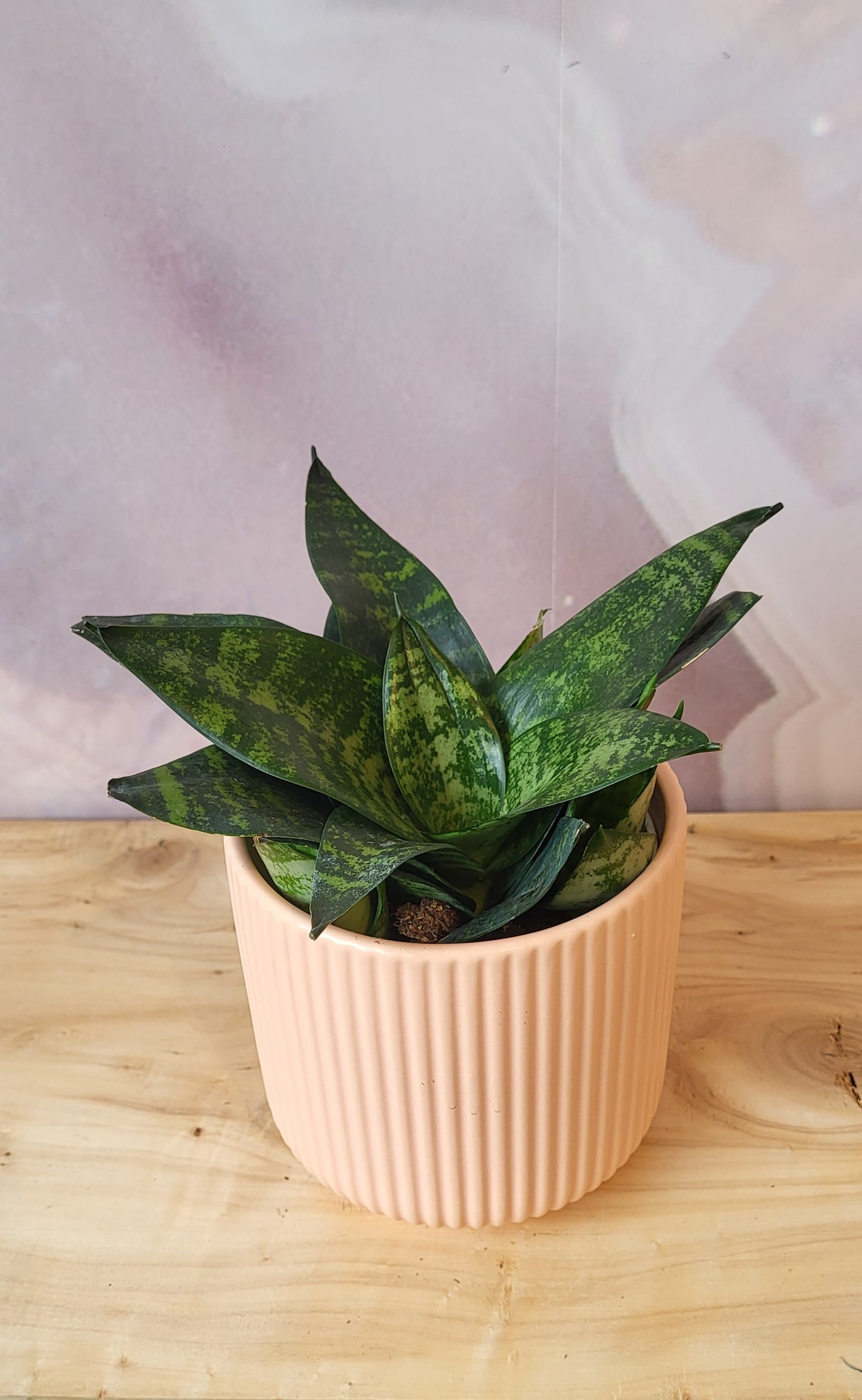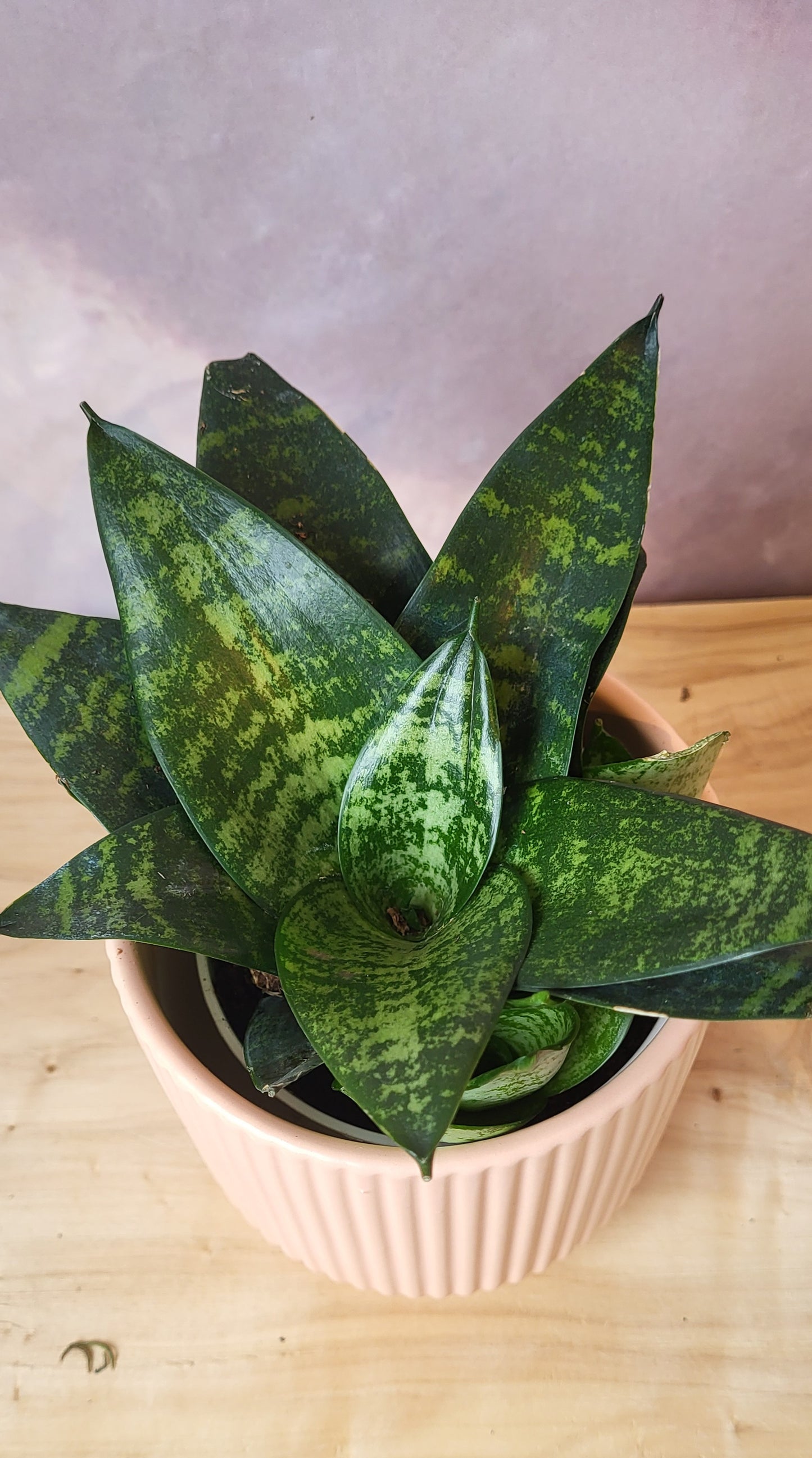Calabrese Greenhouse, Inc.
Sansevieria Bird's Nest-4"
Sansevieria Bird's Nest-4"
Couldn't load pickup availability
**Does not include decorative pot**
Snake plant, also called mother-in-law's tongue, is a popular and hardy houseplant with stiff, sword-like leaves. It's available in different varieties, many of which have green-banded or striped leaves with a yellow or cream border.
Light
Snake plants grow best with eight to ten hours of indirect sunlight or a few hours of early-morning direct sunlight. Too much direct sun causes can burn the plant and damage its leaves. Snake plants tolerate some shade, but lack of light can stunt growth and dilute the plant's color.
Soil
As a houseplant, snake plants prefer a loose, well-drained potting soil mix. They do well in sandier soil which makes all-purpose cactus potting soil a good choice. Avoid soil mixes that contain a high percentage of peat, which can retain too much water.
Water
Water your snake plant when the soil has completely dried out, then water deeply. During winter, check the plant's soil mix every two weeks or so—the plant might need to be watered only once a month. If you notice its leaves are brittle and dry, water immediately.
During spring and summer when the plant is in active growth, watering every two weeks or so is usually sufficient. Keep in mind that over-watering is the quickest way to kill a snake plant. Too much water or letting the plant sit in water will rot its root system. Yellowing leaves are an early sign of over-watering.
Temperature and Humidity
Snake plants grow best in warm temperatures between 70°F and 90°F. Keep plants away from cold drafts.
They won't tolerate frost, and prolonged exposure to less than 50°F can kill the plant. They'll do fine with average household humidity between 30 and 50 percent.
Fertilizer
Feed your snake plant once in spring and once in mid-summer with a balanced, slow-release 10-10-10 fertilizer diluted to half strength. Do not fertilize in winter.
Share




